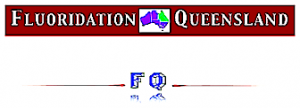You are here: Home1 / VITAMIN C: SUDDEN INFANT DEATH SYNDROME – Patterns and Its Prevention...

It is important to realize that none of these infants was
ill enough to cause concern. Death, or shock
followed by death, came before any senior
professional help could be obtained.
VITAMIN C: SUDDEN INFANT DEATH SYNDROME
PATTERNS AND ITS PREVENTION

Posted on 5 October 2010 – Original → HERE
Thank you Health News Blog
No one has yet alleviated the heartbreaking mystery of Cot Deaths —
Sudden Infant Death Syndrome, commonly referred to as SIDS.
Every possible cause has been considered and researched but though many have fitted some cases, in others no similar signs have been found. And still they happen — and are, indeed, the most frequent cause of death in infants under one year. At least 600 a year in Australia.
No common factor has been found applicable to all cases.
So many apparently healthy babies are just found dead in their cots before anyone can save them or indeed even realize they are at risk.
I say apparently healthy; there may be merely a sniffle, irritability, a sore ear, a slight cough or a few loose motions — a few bruises on the arms or legs — nothing to make a fuss about or call a doctor; or they may have been recently immunized against diphtheria, tetanus and whooping cough.
Dr Archie Kalokerinos saw these deaths actually happening mostly among aboriginal babies in his practice in the far western town of Collarenabri in New South Wales. Their mothers brought them to his hospital with some trivial ailment or just because they were not thriving or not eating well. So many of them went into shock and died before his eyes that there was a practically 50 per cent mortality, as his book ‘Every Second Child’ describes.
No antibiotics or methods of resuscitation succeeded in saving them.
It is important to realize that none of these infants was ill enough to cause concern.
Death, or shock followed by death, came before any senior professional help could be obtained.
‘Autopsies’, wrote Dr Kalokerinos in the Nurses Journal dated March 1978 ‘did not reveal anything to explain these deaths. In many cases there were some changes in the lungs, suggestive of pneumonitis, but I knew that this was not sufficient to explain why an infant should die. However, I did observe changes in the livers in many cases. There were mottling-pale yellowish areas surrounded by areas of redness. Various pathologists have told me that this was due to post-mortem changes, but I had seen too many autopsies on infants who had been killed in accidents and I knew this was not so. In order to settle the question I performed autopsies on infants immediately after death (within a few minutes). The livers almost always demonstrated the mottling’.
In desperation, ‘Rather than wait until an infant was dead or in a shocked condition’, he writes, ‘I decided to send the next infant presenting with a history of repeated illnesses and a tender liver to a senior colleague for an opinion.
‘I selected Dr Douglas Harbison, of Tamworth, 353 km away. The infant arrived without any serious problems and Douglas was left to do a little head scratching. There were, in fact, very few clinical signs. The infant was irritable — but they all were! Perhaps it was this that made Douglas think of sub-clinical scurvy (he does not know why to this day). So the infant received an injection of 100 mg of Vitamin C. Recovery was dramatic’.
Though Dr Kalokerinos did not realize it at the time, this was the first breakthrough in saving an infant from a typical cot death with Vitamin C — injected, not waiting for slow absorption from the bowel.
But Archie, now disillusioned with medicine, went away to Central Australia and thought about it. There he saw how the aboriginals lived and ate. Their diets were almost totally deficient in Vitamin C.
‘Maybe’, he reasoned, ‘when the infants became ill they needed more Vitamin C. Maybe they could not absorb the vitamin from food in such circumstances. Maybe, that was why the infant sent to Tamworth had survived — the injection of Vitamin C had bi-passed the intestines. Maybe if I gave injections of the vitamin instead of just giving it in food there would be an end to the deaths.
‘Too many maybes — maybe? But I decided to try it out. In December, 1967 I returned to Collarenabri and the practice of medicine.
‘First I found that I could reverse the shock stage by administering Vitamin C by injection. The doses used at first were 100 mg repeated after an hour or so. However, I soon found that this was not always enough, and doses were increased to 1000 mg or more. It soon became obvious that the infant sent to Tamworth years before had been lucky — 100 mg may not have been enough.
‘Then I found that I could stop infants from entering into the shock stage by administering Vitamin C by injection when they were ill and by giving large doses routinely by mouth to every infant. These doses were hundreds of times larger than the daily recommended allowances. I gave 1000 mg to an infant one year old instead of the recommended dose of between 5 mg and 20 mg.
‘There were no more deaths. No more SIDS, no more deaths for 10 years from illnesses in infants under my care. Surely this is a record!’
Archie then noticed that any severe stress, such as sedatives, an anaesthetic, immunisation injections or teething, were sufficient to so deplete the little bodies of Vitamin C that they could become victims of’ sub-clinical’ scurvy and at risk of the Sudden Infant Death Syndrome.
Any infant subject to these stresses, as well as infections, needs extra Vitamin C — many times more than the Recommended Daily Allowance of 5 mg to 20 mg. Considering how devoid of C are the usual formulae and baby foods — especially on keeping in the ‘fridge for several hours (personally tested by Dr Dettman) — and much more than is given by conscientious mothers in a few ounces of orange juice or even controlled doses of the Vitamin C rich preparations especially designed for babies. These are good, but not strong enough for a baby ‘at risk’.
Dr Glen Dettman, a pathologist of Oakleigh Laboratories, Melbourne, then joined Dr Kalokerinos at Collarenabri and together they tested with C-Stix the foods available to aboriginals and used by the white population of the district. Usually they were woefully deficient in Vitamin C. Even the breast milk of the mothers was deficient in the vitamin because they themselves had little in their own diet.
A scientific expedition was sent from the Commonwealth Health Department and from Hoffman-la-Roche to Collarenabri to test the conditions and they reported the same findings of a gross Vitamin C deficiency, particularly among aboriginal families, in the district. A definite case of scurvy was indeed found in one of the fully breast fed infants.
Drs Dettman and Kalokerinos have continued to study the Vitamin C status of infants and others in many situations both in individuals and institutions and to report their findings, which consistently confirm their central theory that deficiency of Vitamin C — sub-clinical scurvy — is the one common factor in the SIDS.
Factor X, the instigating cause, may be anything from infection to immunisation that sets off the syndrome. They are particularly concerned by the frequent reactions of babies to triple antigen and to other vaccines given without first testing whether the infant has sufficient Vitamin C in his body to produce an immune response in his blood. Otherwise he may show a sharp reaction to the vaccine, or be thrown into a state of shock.
They believe that all babies and young children should have enough Vitamin C in their bodies to spill over into the urine — a sure sign that there is at least 1 mg per 100 grams in their blood. That when a baby is ‘off color’, irritable, teething, sniffling and particularly when he has to meet the stress of an immunisation needle, his urine should be tested with a C-Stix — a simple matter of a few seconds — to make sure of his Vitamin C status .
It is well recognized that babies who have any infection should not be immunized; in fact, a warning is issued in the instructions enclosed in every triple antigen pack. This should be meticulously heeded by every doctor giving their shots to 3-6 month old babies; and mass immunisation programmes, as has often been done in aboriginal groups should not be undertaken without first ascertaining the health and Vitamin C condition (or status) of each child.
Dr Kalokerinos had a unique opportunity in the isolated community of aboriginal families at Collarenabri of observing their diets closely and correlating them with their actual Vitamin C status when the babies were brought to his hospital. Until Vitamin C was used all orthodox methods failed to reduce one of the highest infant mortality rates in Australia. With the introduction of adequate amounts of Vitamin C the situation was dramatically reversed with the death rate dropping to zero.
The conclusions reached by Drs Kalokerinos and Dettman are corroborated by two eminent doctors in U.S.A. with long experience of SIDS. Dr Irwin Stone of U.S.A. in a letter to Dr Dettman writes —
‘You might be interested to learn that in two autopsies, I was able to ascertain the urinary spill over of ascorbate measured by the simple C-Stix test. In both instances it was zero, indicating that infantile scurvy contributed largely to their deaths.
‘I also persuaded SIDS researchers at Stanford University to test the urine of their high SIDS risk babies who are on monitoring equipment while they sleep. These were also all zero. Some of these children have 20 to 30 crises a night and their parents are up all night watching them. Don’t you think that under these circumstances their medical attendants would try and give the kids a couple of grams of harmless ascorbate just to see if the crises could be avoided?’
Perhaps on cot deaths the most pertinent of the statements I have read are those made by Dr F. Klenner of the U.S.A. and I quote part of his paper herewith —
‘In 1948, I published my first paper in the use of massive doses of Vitamin C in treating virus pathology. By February, 1960, some 25 scientific papers later, I realized that every head cold must be considered as a probable source of brain pathology. Many have died, especially children, following the sudden development of cerebral manifestations secondary to even slight head and/or chest cold. These insidious cerebral happenings are responsible for the so called crib deaths attributed to suffocation. These infants and children who have been put to bed apparently well, except for an insignificant nasal congestion, will demonstrate bilateral pneumonitis at autopsy. Adequate Vitamin C, taken daily will eliminate this syndrome’.
Dr Kalokerinos has had more first hand experience in observing — and saving — more infants with SIDS than anyone in Australia. With his consent I quote here his summary of the sudden Infant Death Syndrome with his advice for its prevention and treatment.
Apparently healthy infants found dead. A trivial or minor illness — found dead. Either 1 or 2, then sudden collapse, shock, failure to respond to resuscitation — death. Pattern 3 where resuscitation is entirely (near miss) or partially (residual brain damage) successful. Sudden death or shock followed by death during the course of a moderate or severe illness not explainable by toxaemia.
According to pattern of death
1.) Nothing, or virtually nothing abnormal.
2.) ‘Pneumonitis’ or something trivial.
3.) Most likely some lung changes due to respiratory or cardiac collapse. May find petechial haemorrhages.
4.) No death, no autopsy.
5.) The findings of the illness with the addition of those in pattern 3 where shock preceded death.
In addition there may be liver changes demonstrable before death by liver tenderness, liver pain (grunting respirations) and at autopsy by ‘mottling’ — yellowish patches surrounded by reddish patches, somewhat like patchy, partial acute yellow atrophy.
It was first found that the shock stage could be reversed by the intramuscular or intravenous injection of large doses of ascorbate (up to 1000 mg of sodium ascorbate for a 3 month old infant, more for an older child).
2. It was then found that the routine administration of large amounts of ascorbate by mouth (1000 mg a day for an infant of one year) for all infants and the use of the intramuscular and intravenous route when infants were ill stopped the shock phase from occurring and stopped all SIDS over a period of 10 years.
Is a sudden deficiency of ascorbate and this can occur even if the diet contains so-called ‘adequate’ amounts because of increased utilization. Any stress, any infection and immunization causes increased utilization.
Antenatally
Proper antenatal nutrition, stop smoking, drinking, pollution, no food additives, adequate rest, ensure adequate amounts of ascorbate. Immediately after birth
Immediate breast feeding to ensure colonization of the gut with lactic acid bacilli instead of colon bacilli (E.Coli). During infancy
Continue attention to mother’ diet, vitamin supplements, test breast milk for ascorbate levels; test babies urinary excretion of ascorbate; attend to infant’s environment; beware of orally administered antibiotics and iron; supplement infants with large amounts of ascorbate; beware of immunizations. Dangers of drugs and sedatives [fluoride]
When ascorbate is deficient, sedatives, anaesthetics and drugs can have, on some cerebral centres, enhanced actions leading to collapse and death.




Scroll to top
Leave a Reply
Want to join the discussion?Feel free to contribute!